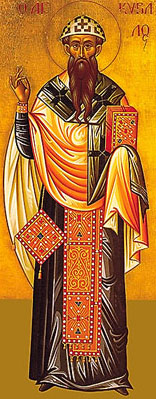 Theologians can say a lot about Jesus. The sub-topic within Christian theology known as christology is a big one. But from the simple faith of a new believer up through a scholar who has made christology the work of an academic lifetime, the central question is about the identity of Jesus. Who is this person? It’s good to stop and wonder at this from time to time, which explains why Christmas carols and songs about the cross so often come to rest on this single question: From “What child is this?” to “What wondrous love is this,” faith asks about the identity of Jesus.
Theologians can say a lot about Jesus. The sub-topic within Christian theology known as christology is a big one. But from the simple faith of a new believer up through a scholar who has made christology the work of an academic lifetime, the central question is about the identity of Jesus. Who is this person? It’s good to stop and wonder at this from time to time, which explains why Christmas carols and songs about the cross so often come to rest on this single question: From “What child is this?” to “What wondrous love is this,” faith asks about the identity of Jesus.
The breakthrough moment in the history of Christian thought, when Christians reached a new level of clarity about the identity of Christ, was the Third Ecumenical Council, the Council of Ephesus in the year 431.
It was the heresy of Nestorianism which provoked the third council, and Cyril of Alexandria (d. 444) is the key theologian at this council (and the guiding spirit of the next two councils as well).
There is a perennial question about whether Nestorius himself was a Nestorian. But for the sake of getting to the theological payoff of the council, it is enough to describe Nestorianism as the type of christological heresy which declares such a strict distinction between the divinity and humanity of Christ that it treats the two natures as separable.
One of the many places this error becomes manifest is in the question of who Mary gave birth to. Nestorius had scruples about saying that Mary had carried and given birth to God (such that she could be called Theotokos, God-bearer), preferring instead a term he considered more precise and pious, Christotokos, Christ-bearer. Cyril discerned underneath this squeamishness a view of Christ which thought far too disjunctively about his human nature and his divine nature, as if they were two distinct persons within the one Christ.
Nestorius had clear ideas about the difference between the human and the divine, but seemed to be at a loss to account for how these two are unified in Christ. The one person who is Jesus Christ seems to be, for Nestorianism, the result of the incarnation or a way of talking about what these two vastly different entities, God the Son and the man Jesus, natures are doing together.
Cyril’s one central insight cut through this confusion: The eternal Logos, who existed before all ages and was consubstantial with the Father, is the active subject who takes on a perfect human nature. He, the hypostasis of the Logos, is the one who comes to be born of Mary and to die on the cross, and because he never ceases to be homoousios with the Father (he is God, having divine nature) or homoousios with his mother (he is human, having human nature), anything that can be said of one of his natures can be said about him, the Logos Jesus Christ. Behind this concern we may still see the Nicene soteriological axiom that God alone can save us, but it has taken on a more precise meaning with Cyril.
For the sake of salvation, Cyril knew that the subject who undertakes all the acts of the incarnation must be the person of the Son.
(To see more on the christology of the ecumenical councils, check out my previous entries on the subject: Chalcedonian Christology in general, the Council of Nicaea in 325, and the first Council of Constantinople in 381.)